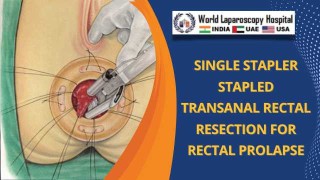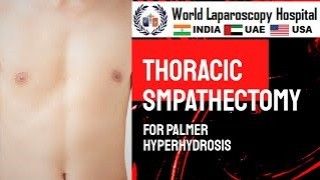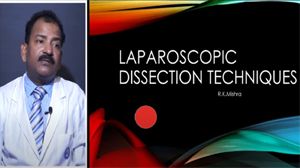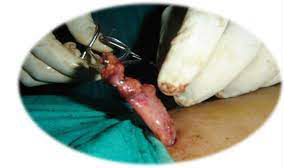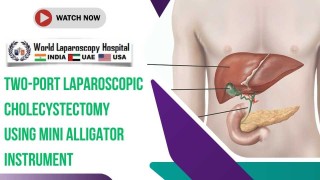Advancing Surgical Techniques: Exploring Laparoscopic Mastery in Peritoneal Inclusion Cyst Treatment
Add to
Share
1,439 views
Report
1 year ago
Description
In the realm of modern medicine, the field of surgical techniques continually evolves, pushing boundaries and revolutionizing the way we approach complex medical conditions. One such advancement that has gained significant traction is the laparoscopic management of peritoneal inclusion cysts. This innovative approach has garnered attention for its minimally invasive nature and impressive outcomes, solidifying its place as a promising frontier in surgical mastery. Peritoneal inclusion cysts, characterized by the encapsulation of fluid within the peritoneal cavity, have traditionally been treated through open surgical procedures. However, with the advent of laparoscopic surgery, a paradigm shift has occurred, offering patients a less invasive option with numerous benefits. The laparoscopic management of peritoneal inclusion cysts involves the utilization of specialized instruments and a high-definition camera inserted through small incisions in the abdominal wall. This enables surgeons to visualize the cysts and surrounding structures with remarkable clarity, facilitating precise and targeted interventions. Compared to open surgery, laparoscopy offers reduced postoperative pain, shorter hospital stays, faster recovery times, and superior cosmetic outcomes. The procedure begins with insufflation of the abdomen using carbon dioxide gas, creating a pneumoperitoneum that creates a space for optimal visualization and manipulation. Next, trocars are inserted to introduce the laparoscopic instruments, including a camera and various surgical tools. The surgeon carefully navigates through the peritoneal cavity, identifying and dissecting the peritoneal inclusion cysts. One of the key advantages of laparoscopic management lies in its ability to address complex cases with finesse. The surgeon can effectively remove the cysts, excise any adhesions, and restore normal peritoneal anatomy while preserving surrounding organs and tissues. The high-definition camera and magnified views allow for meticulous inspection, ensuring complete cyst removal and minimizing the risk of recurrence. Additionally, laparoscopy offers improved patient outcomes through reduced postoperative complications. The smaller incisions result in decreased blood loss, a lower risk of infection, and reduced incidence of wound-related issues. Moreover, the laparoscopic approach contributes to less disruption of normal physiological functions, facilitating a quicker return to normal activities for patients. Another significant advantage of laparoscopic management is its applicability to both diagnostic and therapeutic purposes. With the ability to visualize the peritoneal cavity directly, surgeons can accurately diagnose the presence of peritoneal inclusion cysts and differentially diagnose other conditions with similar symptoms. This ensures accurate and timely treatment decisions, enhancing patient care and overall outcomes. As with any surgical technique, laparoscopic management of peritoneal inclusion cysts requires skill and expertise. Surgeons undergo extensive training and practice to master the intricacies of this approach. Furthermore, patient selection plays a crucial role in achieving favorable results. Careful assessment of patient characteristics, cyst size and location, as well as the presence of concomitant pathologies, guides surgeons in determining the suitability of the laparoscopic approach. The laparoscopic management of peritoneal inclusion cysts represents a transformative milestone in surgical innovation. Through its minimally invasive nature, precise interventions, and enhanced patient outcomes, this approach has reshaped the landscape of cyst treatment. As technology continues to advance, and surgical expertise evolves, it is anticipated that laparoscopy will play an increasingly prominent role in the management of peritoneal inclusion cysts, solidifying its position as a gold standard in surgical excellence. Beyond the immediate advantages, laparoscopic management of peritoneal inclusion cysts also holds promise for long-term outcomes. By minimizing tissue trauma and preserving the integrity of the peritoneal cavity, this technique reduces the risk of postoperative adhesions. Adhesions, which can lead to pain, bowel obstruction, and fertility issues, are a common concern in traditional open surgeries. With laparoscopy, patients may experience improved long-term quality of life and a lower likelihood of complications associated with adhesions. Furthermore, the laparoscopic approach offers the potential for faster recovery and a quicker return to normal activities. Patients typically experience less postoperative pain and discomfort compared to open surgery, allowing them to resume their daily routines sooner. The shorter hospital stays associated with laparoscopy not only reduce healthcare costs but also minimize the physical and emotional burden on patients, enabling them to regain independence and normalcy swiftly. Collaboration between surgeons and other healthcare professionals is paramount in advancing the laparoscopic management of peritoneal inclusion cysts. With multidisciplinary teams comprising gynecologists, general surgeons, radiologists, and anesthesiologists, comprehensive care can be provided to patients. This collaborative approach ensures optimal preoperative evaluation, accurate diagnosis, and precise surgical planning. Additionally, ongoing research and sharing of experiences among medical professionals contribute to refining surgical techniques and expanding the scope of laparoscopic management in the field of cyst treatment. As with any surgical procedure, laparoscopic management of peritoneal inclusion cysts does have certain limitations. Cysts with complex anatomical locations, extensive adhesions, or large sizes may pose challenges that require careful consideration. In such cases, conversion to an open procedure may be necessary to ensure patient safety and optimal outcomes. Surgeons' expertise and judgment play a crucial role in assessing the feasibility of a laparoscopic approach on a case-by-case basis. Looking ahead, the future of laparoscopic management of peritoneal inclusion cysts holds even greater promise. Advancements in technology, including improved laparoscopic instruments, three-dimensional imaging, and robotic-assisted surgery, may further enhance surgical precision and expand the indications for laparoscopy. Additionally, ongoing research efforts aim to optimize patient selection criteria, refine surgical techniques, and assess long-term outcomes, paving the way for continuous improvement in the field. The laparoscopic management of peritoneal inclusion cysts is a cutting-edge surgical technique that revolutionizes the treatment of this complex medical condition. By employing minimally invasive procedures, surgeons utilize specialized instruments and high-definition cameras to navigate the peritoneal cavity with remarkable precision and clarity. This advanced approach offers numerous benefits, including reduced postoperative pain, shorter hospital stays, faster recovery times, and superior cosmetic outcomes. With its ability to address complex cases while preserving surrounding organs and tissues, laparoscopy provides patients with a less invasive alternative to traditional open surgery. This description highlights the transformative nature of laparoscopic management and underscores its potential to reshape the landscape of cyst treatment through its meticulous interventions and enhanced patient outcomes. In conclusion, the laparoscopic management of peritoneal inclusion cysts represents a significant advancement in surgical techniques. Its minimally invasive nature, precise interventions, and superior outcomes make it a compelling option for patients and healthcare professionals alike. As this field continues to evolve and refine, the laparoscopic approach is poised to become the standard of care, offering patients an innovative and effective solution for the treatment of peritoneal inclusion cysts.
Similar Videos


